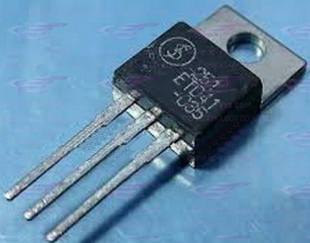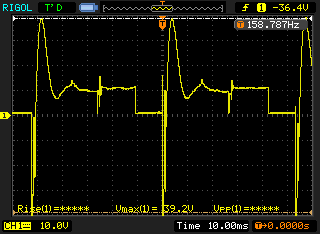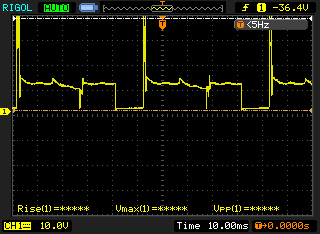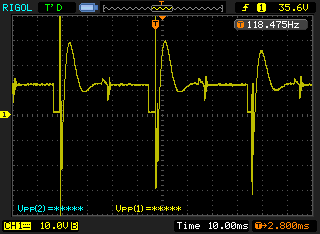The original transistors used in our Transistor Controlled Ignition igniter boxes are Fuji made ETD41-035. They were discontinued many years ago.

Various sources dedicated to old Yamaha motorcycles such as the Vision and the Virago suggest that the MJE5742 is a drop-in replacement.
Don't waste your money. Those transistors were designed for CDI type ignition systems, not Kettering type systems (like points and TCI systems). They incorporate a diode between the emitter and the collector that bleeds the energy from the coil too quickly, leading to a weak spark. The bike may run, but will probably be hard to start and not very fault-tolerant if the mix is off or the plugs fouled.
Looking at the performance by connecting an oscilloscope to the TCI coil connections shows a marked difference in performance. Compare these two screen captures of the two in action:

TCI Coil Ground with original ETD41-035 transistor installed

TCI coil ground signal with replacement MJE5742 installed.
As can be seen, the pulse is notably brief and positive-going only (ie: no avalanche).
The good news is that there seems to be one that is: the ST901T (subject to some long-term testing). They were swapped in to the same TCI originally rebuilt with the MJE5742 as per the directions found here, and tested in the same bike, with the same coils and the oscilloscope on the same settings. The coils are OEM, but the wires and caps were replaced as per the tutorial on the XJCD.
The dwell is notably shorter, and the peak pulse voltage is lower, but the overall signal is much closer to the original:

In practice, the ST901T works great. In fact, the spark is much stronger than the original. (Compared to a known-good all-original TCI igniter unit used as a control.) The control starts to become intermittent at about 1/4" gap in free air. This is using an adjustable spark-gap tester on the #1 cylinder with the engine idling at about 1,100 rpm (the tester replaces the spark plug in circuit, so it's running on 3 cylinders during the test).At that gap, the engine started to stumble and the idle droped off, showing the #4 cylinder was misfiring.
With the MJE5740 installed, the spark barely jumped a 1/8" gap (in free air, so that would be less under compression. No wonder it was hard-starting.) But when they were replaced with the ST901T, the spark was consistent and steady even when the gap was opened up to 1/2"! The spark was still strong and the engine was not stumbling, but the test was terminated at 1/2" for fear of stressing the coils and wires with the excessive voltage.
On the road, the rebuilt unit performs flawlessly up to redline (9,500 rpm), with no unusual surges or hesitation. The long-term durability of this transistor is now the only question. However, it was designed specifically for small-engine Kettering type ignition systems, so problems are not anticipated.
The bottom line seems to be that the ST901T is actually superior in performance than the OEM transistor.
UPDATE: These have been in regular use all summer for two three seasons now without a hiccup.
Note: I found a Chinese vendor on a poplular Asian website that claimed to have the original transistors. However, on receiving the order, I found that the product did not match the picture. The original lettering had been sanded off. The part number was the same, but the manufacturer's logo was not -- it was a modern Fuji Electric logo, not the original logo. The electrical characteristics were different from a known-good original TCI transistor, with about half the gain. I believe these to be either rejects or counterfeits.
